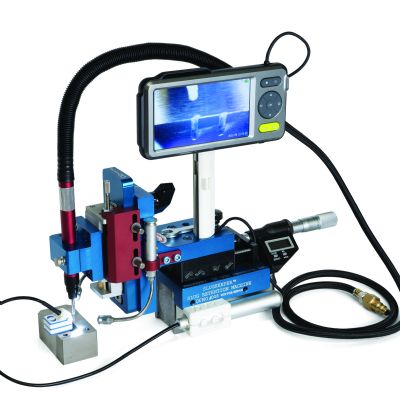 Peter Ulintz
Peter UlintzFour Strategies for Maintaining Dies and Equipment
April 1, 2016Comments
In general, the types of maintenance metalformers perform on their stamping dies and pressroom equipment fall into four categories:
• Reactive
• Preventive
• Predictive
• Proactive.
Reactive maintenance is nothing more than reacting to failed tooling or equipment by restoring its intended function. For example, when a technician or quality engineer observes an unacceptable burr height on a stamped part, he summons the toolroom to replace the punch. This restores the tooling to its intended working condition so that production can resume.
Many companies rely solely on this type of maintenance operation—acceptable in limited circumstances, but typically a very costly way to operate. Breakdowns become unpredictable; labor and material resources cannot be planned in advance for repairs, sorting of suspect parts or replacing defective product maybe required; the shop may have to pay premium rates for unplanned overtime; expedited shipping costs may be incurred; and the shop may experience delayed downstream processes. Most importantly, tooling and equipment life are not being maximized. By the time visible, audible or other events signal maintenance to react, the tooling or equipment likely has been damaged.
In summary, companies that rely on reactive maintenance generally expend more labor and material resources than those practicing preventive maintenance.
 Preventive maintenance (PM) consists of formal procedures and tasks designed to prevent unplanned breakdowns, and to ensure the proper operation of equipment and tooling. Shops schedule and perform PM tasks predetermined by use of owners manuals, industry standards and guidebooks, and by evaluating environmental conditions, equipment criticality, impact on safety, past experience, etc.
Preventive maintenance (PM) consists of formal procedures and tasks designed to prevent unplanned breakdowns, and to ensure the proper operation of equipment and tooling. Shops schedule and perform PM tasks predetermined by use of owners manuals, industry standards and guidebooks, and by evaluating environmental conditions, equipment criticality, impact on safety, past experience, etc.
PM tasks include changing lubricant; replacing consumable parts; and cleaning, adjusting, inspecting and testing tooling and equipment. In the press shop, an example of PM is replacing punches at a predetermined interval (number of hits) to help ensure production of burr-free parts.
A sound PM program keeps equipment running in good condition, and helps to extend the period between breakdowns. It also helps managers plan and budget for replacement parts, and schedule the necessary work at predictable and convenient times. This translates into cost savings.








